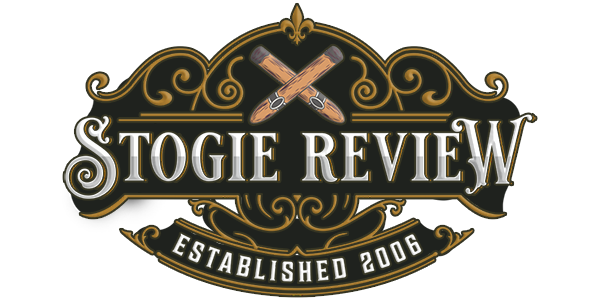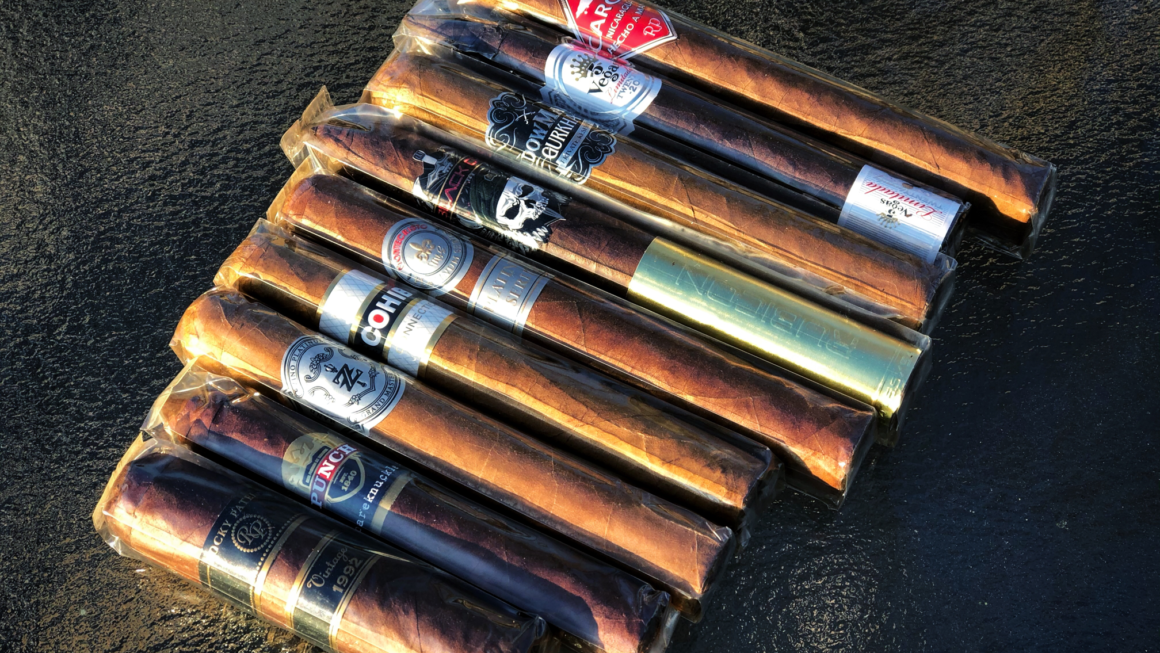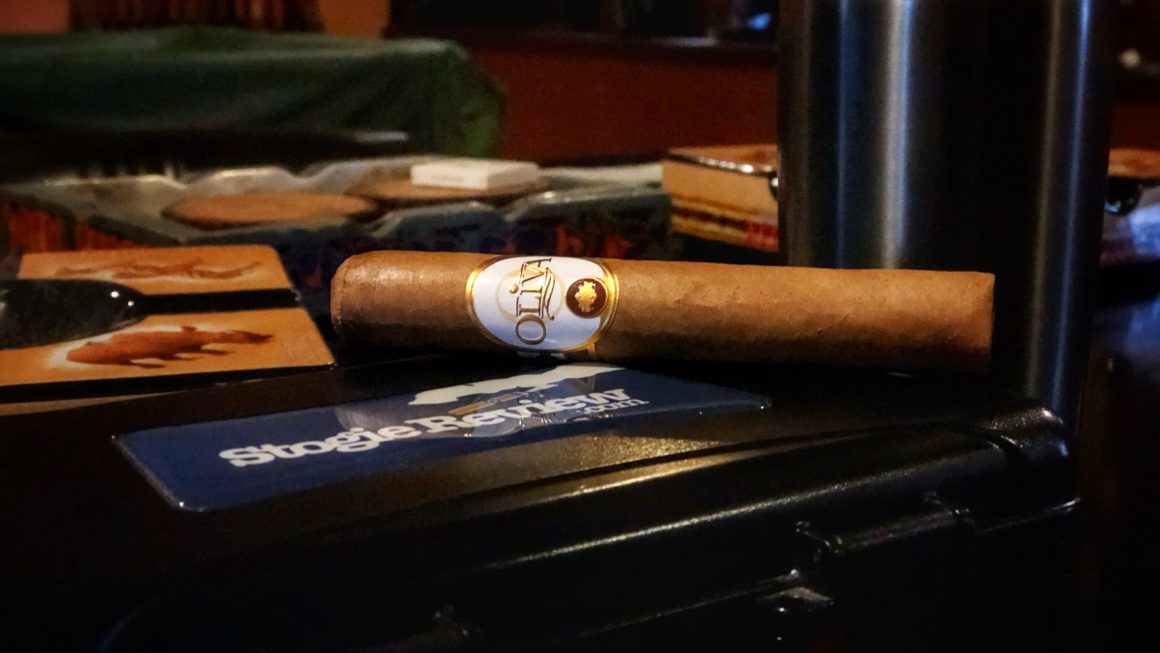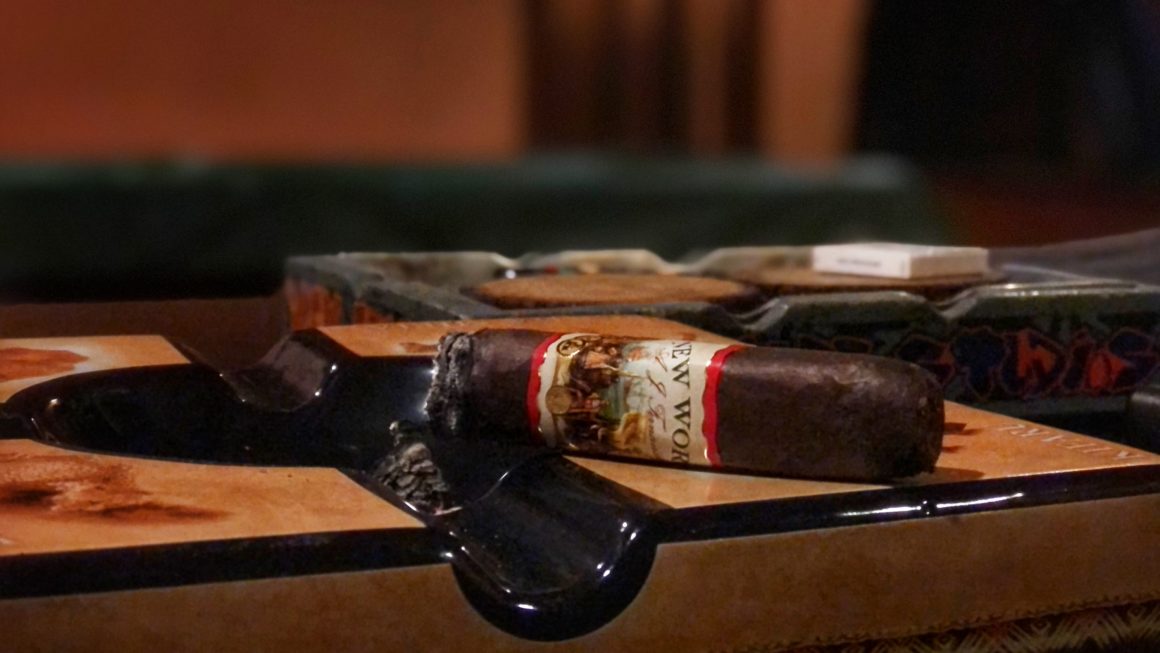Man has been cultivating, preparing and smoking tobacco for over 7000 years. Any activity that man is involved with for that amount of time is sure to accumulate a wealth of myth, half-truths and ritual. While all of that is fascinating information to the dedicated cigar smoker, I would like to take this opportunity to explore a few of what I call “cigar mythconceptions”. These “mythconceptions” come in a variety of vitolas if you will allow me to expand the meaning of the term, and in this article I will focus on the first and perhaps most prevalent of all.
Myth #1 Cuban Cigars are the best cigars in the world
Any discussion of Cuban cigars must include some mention of the history in order to provide context and perspective to the discussion.
History and archaeology tell us that the native peoples of South America were smoking tobacco for many generations prior to the arrival of Columbus in 1492. The seeds were originally transported to Cuba from South America which is particularly ironic since today almost every non-cuban cigar producer touts the use of Cuban seed tobacco.
The tobacco seeds transplanted to Cuba became the primary agricultural product of the tiny island and it was quickly integrated into the very fabric of Cuban society and culture.
Cuba was originally a property of Spain and Cuban tobacco was only allowed to be exported as raw material and only through the royal offices of Spain. This was a common economic relationship enforced by many colonial governments that assured the conquerors a regular flow of tax money and strengthened their control of the colony. Cigars were manufactured UsIng Cuban tobacco in Spain and distributed globally by Spanish interests. However, a deeply rooted appreciation for the leaf was motivating the development of skill sets that made the Cubans expert at growing and curing tobacco as well as producing cigars, if only for their own consumption. During this colonial period, the punishment for removing tobacco seeds or seedlings from Cuba to a non-Spanish colony was death. The Spanish took their cigars very seriously.
King Ferdinand VII, by royal decree, made the production and sale of tobacco and its derivative products, a legal endeavor in Cuba. The birth of the Cuban cigar industry! Until then, only raw materials came from Cuba. Essentially, for taxation and control purposes, Cigar producton in Cuba had been illegal until 1817. Cigar production has changed very little since the 1800’s. Seedlings are still transplanted by hand, leaves are harvested by hand and stacked in pilones for fermentation etc. Tobacco around the island is handled this way to this very day. If it ain’t broke don’t fix it.
However, Cuba is not he only country with a history of tobacco.
In the late 1800’s to mid 1900’s Florida was the king of shade grown wrapper production. The benefits of growing wrapper leaves in shade was first discovered in Gadsden County Florida in 1896 when a tobacco farmer growing the popular Sumatra seed wrapper, discovered that plants growing in the shade of a tree produced a superior wrapper leaf with fewer veins, smoother texture and superior flavor. Local farmers began growing Sumatra wrapper under wooden slats. Cuban and South American growers soon adapted a cheesecloth like fabric for the purpose of creating a controlled shade to reproduce the Florida methods. The shade wrapper sold for as much as ten times more than traditional wrapper leaf. At its peak, production in Florida encompassed 10,000 acres and yielded an estimated 10 million pounds of exceptional sun-grown Sumatra wrapper. The boom went bust by 1975 and fertile tobacco fields were converted to citrus, fruit and vegetable farming ending the short, but brilliant reign of Florida wrapper. It was during this same period that Cuban cigar production reached a zenith of world domination. Tobacco production in other countries such as the United States, South America and other locations had either not yet achieved significant quantities or been snuffed out by cheaper competition, weather or government malaise.
In 1959, the Castro Revolution initiated the mass exodus of many of Cuba’s best tobacco growers, blenders and manufacturers. This exodus became the basis for an increasingly quality product from countries such as the Dominican Republic, Honduras and Columbia not to mention the United States. With this sudden influx of talent, non-cuban cigars began to seriously compete with Cuban cigars in both quality and flavor. The cache’ of Cuban cigars in the United States was created by the exclusion of Cuba as a trading partner of the United States. The value of any desirable item is increased as its availability declines. Now in 2008, we have an entire generation that has never known a world of widely available Cuban cigars in the United States. The rest of the world has continued to consume Cuban cigars since the 1959 revolution and have suffered through the blue mold, shortages and all manner of blend changes without being seriously introduced to non-cuban cigars. And so it is from this hallowed olde world perspective, that we learned our reverence and opinion of Cuban cigars. A perspective that may be significantly flawed in its denial of the reality of today’s world.
Certainly Cuba has earned a reputation for producing exquisite cigars that are in demand all over the world, even in locations where it is illegal to purchase them. The fact that they are difficult to obtain feeds into the myth that they are THE best cigars in the world. At one time in history (around 1620 or so) tobacco grown in the Jamestown colony of what would become the United States was highly prized by Europeans and demanded premium prices.
Cuban tobacco provides a unique flavor profile that has defied reproduction elsewhere. But that does not make them a better cigar. There are a number of cigars from other parts of the world that also provide unique flavors and experiences for the cigar smoker. What’s best is left to the individual. For me, the best cigar is the one I am smoking right now, unless it’s the next one I smoke.
This article was writer by our good friend Bob McDuffee
co-host of Dog Watch Cigar Radio.

For a weekly dose of Thoughtful Conversation,
Considered Opinion, and a touch of Insanity
Check out Hosts Bob McDuffee and Dale Roush on
Dog Watch Cigar Radio.




Fantastic article!
I’ve always wondered why people put CC’s on a pedestal…even to this day, having had my fair share of ISOM’s, I still consider it just another type of tobacco. No different than saying Nicaraguan is better than Dominican.
I whole-heartedly agree with Bob…
People say they can’t wait for the embargo to end, so they can buy cuban cigars…
I can’t wait for the embargo to end, so their is yet another unique flavor profile for the best blenders in the world to utilize without limitations.
again… great article!
rick I like you review very much but
WY we like single mail scotch or a real cognac or champagne … ?
for the same reason they like cc or puros,,, is what we call the terroir or and this applier any where were they keeping rolling and cultivating there own tabaco the best examples are the Padron’s or la Flor Dominicana/
you can tray to imitated .. is not the real deal.. sorry gringo..
great article!
I was in Spain this past march and picked up a Cuban. I took the label off for obvious reasons and long forgot what brand it was…after many label searches, I think I had a montecristo. Anyhow, I digress…I smoked it in august and it was great!
But I agree with rich…looking forward to the end of the embargo so there is a new profile available
yeah!…I agree with Rich. Wouldn’t it be nice to have a cigar blended with Nicaraguan and Cuban tobacco!??
Thanks for the good read!
I still like Cubans the best. Depends on the cigar but most of the time I prefer the flavor of an aged Cuban over than of a priced NC. Of course there are NC’s I enjoy but give me an a CC with 10 years on it over a $40 Padron any day.
that was supposed to read ‘…comparably priced NC. ….’
I have only been smoking cigars for three years. I’ve heard all the hype about cuban cigars and I assumed that cuban cigars were the pinnacle of the art and I coveted them badly.
I have an experienced cigar smoking buddy who is well-heeled and well traveled and tends to love the finer things in life. Whenever I stumble across a cigar that I love I would share my treasure with him in hopes of turning him onto something he may really enjoy also. Last year he surprise me with my first ever cubans, a couple of big, beautiful Cohiba’s. He gave me two because my wife Sharon has also become a real lover of the leaf and he wanted her to experience what he considered to be the best of the best. Even though I know they were well stored I left them in my humidor for many months. They were so beautiful it was almost a shame to burn ’em down, plus I derived some kind of crazy pride in owning them.
Last summer we cruised far upstream on the Connecticut river in our boat, killed the motor, cranked up Dogwatch Cigar Radio and shared one of those magnificent sticks while drifting downstream. It was perfect. Burn and construction – perfect. The flavors were wonderful, the aroma, sublime. It was smooth and mellow and we both loved it. Now we knew what all the buzz was about.
One of the great things about smoking with my wife is we are able to smoke two different cigars, side by side, and pass them back and forth to really give them a good comparison. We’ve made many interesting discoveries by smoking that way. After another month or two passed she really wanted to stoke that other stick. I had acquired a Padilla Miami in the Salamone vitola from the dogwatch cigar club and it was calling my name. So, another lazy Sunday we cruised far upstream for another leisurely float and a couple of super fine cigars and some ice cold Spaten Octoberfest beers. Sharon had her cuban Cohiba and I had my Padilla Miami. The Padilla was probably the best cigar I had ever smoked. After about fifteen minutes we swapped for awhile. When I got my Padilla back I didn’t want to share anymore. Of course I did give her a couple more hits off of my Padilla but she had to beg or threaten to get it away from me. The Cohiba was nice but the Padilla was better in every way.
So, I know my experience with cuban cigars is very limited but now I know the rest of the story. Cubans have a well deserved reputation but they are not the best cigars in the world. If I am condemned to smoking cigars from Nicaragua, Honduras, the Dominican Republic and other places that are not Cuba, so be it.
Yes the phrase “comparably priced NC” would be more accurate.
Also, no one on the “hype” side of the argument has made an effective argument why in a free market non-cuban smokes have failed to pentrate markets world-wide. At a time where wines from Australia, Chile, California, and France all enjoy considerable success worldwide the “olde world traditional tastes” argument holds less and less water. In short, most of the non-embargo world smokes cuban cigars because they believe cuban cigars are superior to non-cuban cigars.
Now lets get technical:
Furthermore, “hype” is usually related to a manufacturer trying to create positive “buzz” about their product. By its very definition “hype” is artificial “buzz.” I do not believe anyone from Habanos SA is advertizing in the US, or even large US based publications like CA. So who or what is creating cuban cigar “hype?” Well if this “hype” is not a part of a marketing ploy, then it is coming from consumers and therefore cuban cigar “hype” is in reality cuban cigar “buzz.”
nope…its hype
I agree with everything everyone has said. Using such a general statement like “Cuban cigars are just hype” isn’t really a fair statement. Each cigar needs to be judged individually and not lumped together.
There are some Cubans like the RASS or Vegas Robaina that I think will blow your socks off and then there those that don’t. Just like the same can be said about non-Cubans. I tend to stay away from the Cohiba, RyJ and Montecristo Habanos since they are the most counterfeited.
I like the point Larry brings up as its something I’ve often thought about. Why aren’t the non-Cubans, even the stuff by General Cigar or Fuente not widely available outside of the US?
I’ve been smoking for about 20 years and I’ve smoked a ton of cigars from all over the world including Cubans. Since smoking cigars is such a subjective thing, tastes being so personal, I can only speak for myself. The Cubans have a more subtle and complex flavor profile. That’s the difference as I see it. The depth of flavor in a Cuban is just so much, well, ….deeper! Little hints of orange peel, mint, nutmeg and on and on. The quality of the non-cubans is just as good or better, and the taste is good but the NC’s simply don’t have those subtle nuances the same way that the Cubans do. For my birthday this year I smoked a VR Famoso and it was heaven. There is a reason that all over the world Cubans are the gold standard for cigars and that reason, to me anyway, is the flavor. Just my opinion, of course.
this is some good info,
people should remember that cuban does not = amazing thing necessary